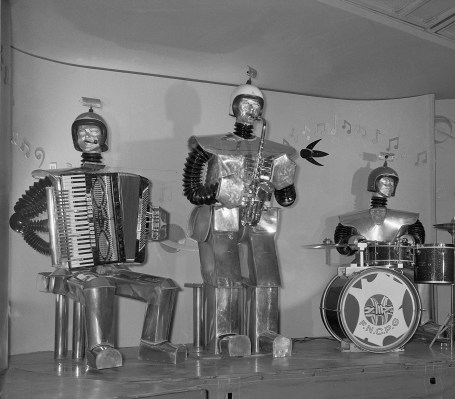For many people, the robot-populated future is a zero-sum game; it’s either going to be us or them running things. Headlines — and not just on conspiracy theory websites — are rife with dire predictions like “Robots will take over most jobs in 30 years” and “The future has lots of robots, few jobs for humans.” Lest one think they will be spared because they are in a “creative” or “people-oriented” discipline, this list should give even those folks something to worry about.
Even the arts aren’t safe. “Computer art” — where a computer uses algorithms to create a piece of art or music — is an emerging technology. You know it’s a serious endeavor when Google gets involved — as the company did earlier this year with its new Magenta platform, which, according to the company, is “a research project to advance the state of the art in machine intelligence for music and art generation. Machine learning has already been used extensively to understand content, as in speech recognition or translation. With Magenta, we want to explore the other side — developing algorithms that can learn how to generate art and music, potentially creating compelling and artistic content on their own.”
So is that the end of human creativity? Not quite (at least, not yet). When Google introduced it in June, Magenta was accompanied by its first creation — a one minute twenty-three second song composition. While reviewers weren’t overly impressed with it as a song, they were very impressed by the fact that it was a computer that composed it. Like with music, Magenta and other computer art projects are creating works using neural network technology that, while not quite yet ready for the Louvre, are considered quite good, considering their source.
It turns out that while robots are good at many things, they are not good at everything.
But the human race is not done yet. There’s another side that opines that robot tech is not as great a threat as many seem to believe. According to these pundits, the alleged robot threat may be exaggerated, either by journalists and bloggers looking for page views or by welfare-state-agenda supporters seeking things like guaranteed incomes or increased government transfer payments — funds that people will obviously need if robots take over all the jobs.
Despite the perception that robots are about to break through and put humans out of business (or in cages!), the hype could be nothing more than a gambit to convince investors that robots are where the action is, similar to the hype around big data a few years ago (which did not quite pan out, either).
It turns out that while robots are good at many things, they are not good at everything, especially tasks like making maps, easily identifying objects and other basic tasks that are needed to accomplish more advanced actions.
According to artificial intelligence expert and MIT professor David Autor, “Journalists and expert commentators overstate the extent of machine substitution for human labor and ignore the strong complementarities that increase productivity, raise earnings, and augment demand for skilled labor. Challenges to substituting machines for workers in tasks requiring flexibility, judgment, and common sense remain immense.”
More likely, believes Autor, is an emerging human-robot “partnership,” in which people take advantage of the advanced capabilities of robots, big data, augmented reality and all the other bells and whistles that are coming into their own and growing in capabilities. And on the cutting edge of that partnership is, believe it or not, art — as artists of all types take advantage of technology to create amazing new works that are unique and praiseworthy enough to win international awards and accolades.
Even lesser talents can take advantage of the plethora of tech tools, online and off, to up their artistic game.
One of America’s most popular artists, for example, is Jeff Koons, known for his use of technology in the creation of canvas art, sculptures and “miscellaneous decorative items.” In 2013, one of his works, Balloon Dog Orange, sold for $58.4 million at auction, making him the most expensive living artist ever. In 2014, the Whitney in New York put on the first-ever retrospective of Koons’ work — the first, because achieving the technology needed to present his work properly was so formidable. In an interview, Koons said that one reason he relied on technology so much was “that I can really be assured that the vision I have from the outset is what will be at the end. And that that vision isn’t altered through the process.”
There are many more human artists like Koons using computers and technology to create amazing and beautiful works of art. Of course, not every artist is going to be able to build a career like Koons’, but even lesser talents can take advantage of the plethora of tech tools, online and off, to up their artistic game. It’s not “cheating,” but working in a different, new medium; the work is done by the artist, and if online tools let an artist do better work, then more power to them.
“We don’t know what artists and musicians will do with these new tools, but we’re excited to find out,” says Google — and what human artists are likely to come up with is likely to be much more interesting than what computers come up on their own. After all, says Google, electric guitar makers Rickenbacker and Gibson “didn’t have Jimi Hendrix or St. Vincent in mind” when they developed their then ground-breaking tech products.
Art can even set an example for the rest of society; true, robots can do it, but they, and humans, can do it better when they do it together. That makes art more relevant than ever.
